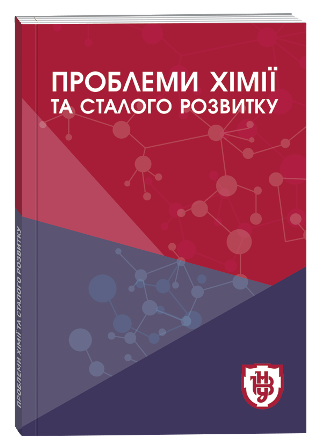SURFACE WATER QUALITY ASSESSMENT FOR IRRIGATION USING HARRINGTON’S DESIRABILITY FUNCTION
DOI:
https://doi.org/10.32782/pcsd-2023-2-5Keywords:
irrigation, water quality index, Harrington desirability function, Umanka RiverAbstract
The research objective is to analyze the existing approaches and develop a generalized assessment methodology for surface water composition, including its physicochemical and chemical-toxicological parameters. The predicted field of water consumption is irrigation. The actuality of the research topic is the key role of irrigation in food problems against the backdrop of global climate change. Harrington's desirability function, a well-known technique of qualimetry was used as an aggregation approach of individual water quality indicators. SAR indicators and the Stabler's irrigation coefficient were calculated as sub-indices. Scales of partial desirability di for each individual parameter of water composition and properties are compiled on the basis of water quality limitations for irrigation. The guidelines of such regulatory documents as Ukrainian State Standard DSTU 2730:2015 Environmental Protection. Quality of natural water for irrigation. Agronomic criteria, and a departmental regulatory document (DRD) 33-5.5-02-97 Water for irrigation. Environmental criteria are the basis for developing quality scales. The procedure of the irrigation water quality index (IWQI) calculation was carried out using our own Python software product WODA v0.6A. On the example of water quality assessment of the Umanka River (Cherkasy oblast), the results of the proposed methodology application in the form of an IWQI according to 18 indicators (a pH, turbidity, total dissolved solids TDS, the main ions of the mineral matrix, phosphates, nitrate nitrogen, total iron, the content of Zinc, Copper, Lead, and Cadmium, Kubel’s permanganate index). It was established that the variability of a pH, turbidity, temporary hardness, and permanganate index were the main influence factors that responded to the overall quality assessment reduction. The qualitative assessment of water quality for irrigation purposes ranged from 73% (good) to 61% (satisfactory). A priori, the river water quality deterioration below Uman city was predictable. The use of the proposed methodology would be useful for the organization of spatio-temporal monitoring, observation data processing, and modeling of water quality according to any set of water composition parameters and properties for various types of water use and consumption.
References
Lorenzo R. Adapting agriculture to climate change via sustainable irrigation: biophysical potentials and feedbacks. Environmental Research Letters. 2022. 17 (6). Article 063008.
Zaman M., Shahid S.A., Heng L. Irrigation Water Quality. In: Guideline for Salinity Assessment, Mitigation and Adaptation Using Nuclear and Related Techniques. Springer, Cham. 2018. P. 113–131.
Stavi I., Priori S., Thevs N. Impact of climate change and land-use on soil functions and ecosystem services in drylands. Front. Environ. Sci. 2022. 10. Article 851751.
Al Yousif M. A., Chabuk A. Assessment Water Quality Indices of Surface Water for Drinking and Irrigation Applications – A Comparison Review. Journal of Ecological Engineering. 2023. 24(5). P. 40–55.
Wilcox L. V. Classification and use of irrigation waters, p. 16. U.S. Dept. Of Agriculture, Circular № 696. 1955. Washington, DC.
Simsek C., Gunduz O. IWQ Index: A GIS-Integrated Technique to Assess Irrigation Water Quality. Journal of Environmental Monitoring and Assessment. 2007. 128. Р. 277–300.
Horton R.K. An index number system for rating water quality. Journal Water Pollution Control Federation. 1965. 37. Р. 300–305.
Chidiac S., El Najjar P., Ouaini N., Youssef El Rayess, Desiree El Azzi. A comprehensive review of water quality indices (WQIs): history, models, attempts and perspectives. Rev Environ Sci Biotechnol.2023. 22. P. 349–395.
Brown R.M., McClelland N.I., Deininger R.A., Trozer R.G. A Water Quality Index-Do we dare? Water and Sewage Works. 1970. 117 (10). Р. 339–343.
Walski T.M., Parker F.L. Consumers Water Quality Index. Journal of Environmental Eng. ASCE. 1974. 100 (3). Р. 593–611.
Dinius S.H. Design of an index of water quality. Water Resources Bulletin. 1987. 23 (5). Р. 833–843.
Smith D.G. A Better Water Quality Indexing System for Rivers and Streams. Journal of Water Science and Technology. 1990. 24 (10). Р. 1237–1244.
Shihab A.S., Al-Rawi S.M. Application of Water Quality Index to Tigris River Within Mosul City. Journal of Al-Rafidain Eng. 1994. 4 (3). Р. 80–92.
Numaan M. M. Development of Water Quality Index for Tigris river water between Alsharqat and Alboajeel. 2008. M.Sc. Thesis, Engineering Collage. University of Tikrit.
Fulazzaky M A. Water quality evaluation system to assess the status and the suitability of the Citarum river water to different uses. Environ Monit Assess. 2010. 168(1-4). P. 669–684.
Морозов О.В., Морозов В.В., Ісаченко С.О. Науково-методичні підходи щодо оцінки якості природної води для зрошення (на прикладі Каховської зрошувальної системи). Водні біоресурси та аквакультура. 2019. 1. С. 90–101.
Географія Уманщини: навч. посіб. / І.П. Козинська, О.І. Ситник, І.В. Кравцова та ін.]. К. : Інтерлінк, 2006. 176 с.
Берчак В.С. Антропогенні ландшафти долини річки Уманки. Наукові записки Вінницького державного педагогічного університету імені Михайла Коцюбинського. Серія «Географія». 2014. 26. С. 98–107.
Voitenko L., Voitenko A. Integrated assessment of irrigation water quality based on Harrington's desirability function. International Journal of Agriculture, Environment and Food Sciences. 2017. 1(1). P. 55–58.
Tanji K.K. Agricultural salinity assessment and management. ASCE Manuals & Reports on Engineering Practice. 1990. № 71. ASCE, N.Y. P. 220–236.







